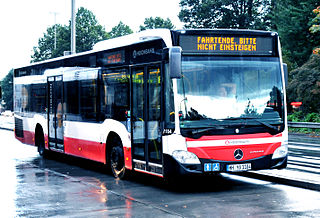
Mercedes-Benz has been producing buses since 1895 in Mannheim in Germany. Since 1995 Mercedes-Benz buses and coaches is a brand of EvoBus GmbH, a wholly owned subsidiary of Daimler Truck.

Theologou was one of the first vehicle manufacturers in Greece. It was created by Nikos Theologos, a Greek mechanic who had lived and worked for a few years in the US, and founded this company after he returned to Athens, Greece in 1906. Around 1916 he designed and constructed a light passenger car with a motorcycle engine; according to his descendants, the efforts had started in 1908, and since 1916 a small number were built. His company, nonetheless, produced a variety of bus and truck bodies, mostly on Ford chassis in the 1920s. By the late 1920s it was facing strong competition by larger companies like Tournikiotis and Athena in Athens, Bouhagier in Patras and others, which also produced vehicles on imported chassis, and was soon eclipsed by them.
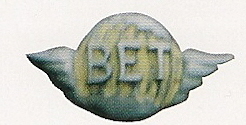
Biotechnia Ellinikon Trikyklon, or BET, was a small vehicle manufacturer founded in Athens by Petros Konstantinou. It was one of several manufacturers - the first appearing in the early 1940s - that converted BMW or other motorcycles into light utility three-wheelers. In 1965 it entirely designed and built a small five-seat passenger car with a BMW 125cc motorcycle engine. Although the type was certified, only one was built due to problems in availability of parts for further production. Following this design, three-wheeled truck models were developed and produced. A second passenger car model was designed and introduced in 1973, known as model 500, with a Fiat 500cc engine. With metal body, seating up to five passengers and featuring very good road handling, it was a rather advanced three-wheeler for its time. It was certified for production and 15 were built, of which one survives to this date in excellent condition. There were even talks with a South African company involving plans for exports or even transfer of production to that country, but they were never realized. The company ceased production in 1975.

MEBEA was an important Greek vehicle manufacturer, producer of light trucks, passenger automobiles, motorcycles, motorbike engines, agricultural machinery and bicycles.

Petropoulos is today a major importer and distributor of vehicles and heavy machinery, having been, at the same time, one of the historic Greek tractor, vehicle and engine manufacturers.

The Sfakianakis group of companies is a Greek conglomerate with a wide range of activities, employing over 2800 in 6 countries in 2014.

Hellenic Vehicle Industry is a Greek vehicle manufacturer based in Thessaloniki.
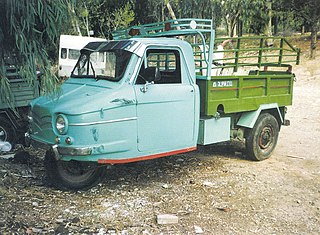
Pan-Car was a Greek producer of automobiles and light trucks, operating between 1968 and 1994. As was often the case in Greece, its name comes from that of its founder, Panayiotis Caravisopoulos. In 1968 it was one of many Greek companies that produced three-wheeled trucks, using Volkswagen engines. In 1977 it introduced beach buggy models built on Volkswagen chassis, which were produced for several years. In 1992 it introduced a jeep-type automobile, also with Volkswagen mechanicals. The model faced a problem common to such ventures in Greece, i.e., receiving type certification for production. That, and financial problems, forced the company to go out of business in 1994.

Ros was the trade name of vehicles produced by the Greek company 'Stavros Konstantinides O.E.', based in Athens. The Ros three-wheeler trucks were the most successful of its kind in Greece, having been produced by the thousands. Ros surpassed in sales even "Greek classics" like Alta and Styl Kar, and the characteristic shape of its trucks could be seen for several years in every corner of the country. And for good reason: The 'Rosaki' was one of the most robust and reliable vehicles ever used in Greece. In 2006, 30 years after the end of three-wheeler production, several Ros were still in use in excellent condition, more than any other three-wheeler type.

AutoDiana was a Greek truck manufacturer based in Thessaloniki, in business between 1975 and 1984. Its main product was the 'Unicar' truck. This robust vehicle had a payload of 1500 kg and used a Mercedes-Benz Diesel engine and Dodge axles. Its fate, along with similar Greek multi-purpose trucks, such as Petropoulos Unitrak, the Agricola, the Motoemil Autofarma, the Balkania Autotractor, the Namco Agricar, was sealed when a change of Greek law in 1984 modified taxes and duties for such farm vehicles. Production was terminated the same year ending a career of reasonable sales among customers in the Greek countryside.
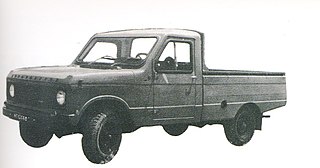
Balkania was the trade name of 'K. Zacharopoulos A.B.E.E.' a Greek industrial and trading company based in Athens that produced 4x4 jeep-type vehicles and 4x4 trucks. Since 1945, K. Zacharopoulos had been involved in vehicle repair and rebuilding. The Balkania company was founded in 1954 and since 1972 it imported Romanian and Indian vehicles. In 1975 it designed and introduced its own Autotractor model, a 4x4 multi-purpose truck with a Mercedes-Benz 3200 cc Diesel engine, metal cabin and a payload of 1,500 kg (3,307 lb). In 1979 the model was redesigned, with a modern synthetic cabin. It was produced, as some similar Greek vehicles, until a change of a favorable categorization for agricultural vehicles in 1984 limited its prospects. The vehicle was modestly successful, as it exhibited certain quality problems.

EBIAM was a Greek company based in Thessaloniki that, among others, produced 4x4 trucks. It belonged to a generation that benefited from a Greek law classifying any vehicle that could be used for agricultural purposes as "agricultural machinery".
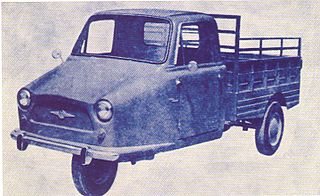
Motoemil was a Greek truck manufacturer based in Thessaloniki. It was named after Emilios Antoniades who started his business, together with his brother Konstantinos, by constructing crude-made trucks assembled from motorcycle and automobile parts. By the mid-1960s, like other similar Greek manufacturers, they were already developing and building complete "automobile" three-wheeler trucks. Motoemil was one of the first of its kind in Northern Greece and soon became the largest in that region, its products sold throughout the country. The first models used 1200cc Volkswagen air-cooled engines. A completely redesigned, more modern-looking model was introduced in 1970, using a German Ford engine.

Candia is a Greek company producing Agricultural machinery and equipment, based in Herakleion, Crete. It is representative of many companies in this country, that produced multi-purpose light farm vehicles.

Emporiki Autokiniton was a major Greek automobile trading and industrial company. Systematic vehicle production started in 1968, while the company built a modern vehicle assembly factory in the north of Athens in 1971. A large number of Mazda, Opel and, later, Alfa Romeo models were assembled – usually with a significant proportion of parts locally produced. The company also introduced modified versions of Mazda trucks, including longer versions of the B1500 and B1600 light trucks. A number of the latter was also produced with the company’s own Grezda brand name in the early 1980s, mostly for export. Emporiki Autokiniton was seriously affected by problems largely connected with the labor unrest of the 1980s in Greece and production was eventually terminated in 1985, after a failed attempt to produce a jeep and a 2-tonne truck type of own development.
TEMAX is a specialised manufacturer of fire and rescue vehicles, trailers and equipment based in Athens, Greece. The company also manufactures snow-clearing equipment.

Tropical is a Greek manufacturer involved in machinery and vehicle development and production. Its history is characteristic of a company which has made significant efforts to evolve in a country that effectively forbids production of locally developed passenger cars.

Bouhagier Patras or Buhayer Patras was considered to be the longest-lived vehicle body manufacturer in Greece. It was founded in 1890 and dissolved in 2004.

Diana (Διάνα) is the brand name for agricultural machinery produced by Irene Chrissadakou A.E. a company located in Tavros (Athens), Greece. Founded in 1976, it is one of the most successful light tractor manufacturers in Greece, also managing to survive the crisis in Greek manufacturing industry of the 1980s and 1990s.
Daimler India Commercial Vehicles Pvt. Ltd. is a subsidiary of the German Daimler Truck AG. This company designs, manufactures, and sells commercial vehicles that cater to the demands of Indian customers and are designed with nation's terrain in mind. These vehicles are branded as "BharatBenz", "Mercedes Benz" and "Fuso".





















